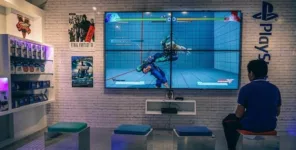Gaming is big business; and it has become the kind of thing that men and women of all ages gravitate towards. The caliber of games in recent years has shot through the roof, with improvements in every area. Some aspects are absolutely breathtaking, and require power that the computers of yesteryear simply couldn’t provide.
The many improvements include top-end monitors, generous power units, back-lit keyboards and a gaming mouse. You can check reviews and compare products on specialized sites like Gearscope. The following will detail the essentials for making sure your gaming rig is capable of handling the most intense games on the market today.
Graphics Are Very Important
This means your desktop (or laptop, if you prefer) will likely need an upgrade. The standard graphics unit that pcs come with aren’t usually the best for high-powered gaming; unless you specifically bought a gaming computer. The GPU will be able to handle the better games, of course, but often only on the lower settings. If you want to play Skyrim, for example, in all its glory, be prepared to shell out for a higher-end graphics card. Go for something made by Invidia or AMD Radeon.
The Central Processing Unit – CPU
The brains behind the computer; again, you’ve got some high-end competitors here in Invidia, Intel and AMD. The GPU is dedicated to handling the graphics load, whereas the CPU handles everything else – sound, loading, etc. Hyper-threaded cores are the norm these days for serious gamers, so opt for at least 4 cores – 8 if you can get them. It provides your gaming rig with untold power, and you shouldn’t see any slacking in the graphics and load times with an 8-16 core processor.
However, if you have to choose between two high-end models, go for the higher GPU. It tackles the physics and math calculations necessary for the most demanding video games; and the CPU attached will always be able to keep pace with the GPU. Intel Core i3, Core i5 and Core i7 are the top CPUs on the market today – in that order.

The Random Access Memory – RAM
If you don’t have enough RAM, it shows up in your task manager and the computer heats up as it tries to keep up with the demands you’re placing on it. If you’re like a lot of gamers, you like to keep a browser or any other program open on your pc while you play. It takes RAM to handle this load; any fewer than 8GB and you’ll be struggling to play mid-range games on high settings.
So what’s best? A computer with 16 GB of RAM is standard for high-end gaming today, and if you’ve got 24GB or even 32GB, you’re flying high – there’s nothing you cannot play. Most computer systems can take a maximum of 64GB of RAM; with this amount, you’re in large movie-studio-processing-power realm. If there’s one caveat, make sure your CPU is good enough to warrant an expenditure of greater than 16GB of RAM – otherwise, the memory is superfluous.
Peripherals
There are all kind of peripheral devices that make gaming more fun. From the right gaming mouse to a backlit keyboard and gamepad, you can have more control over games than ever before. In the age of virtual reality, this could really come in handy.
Two of the most popular peripherals on the market today are the HTC Vive and Oculus rift headgear, which require high-end desktops or gaming laptops. This harkens back to the GPU, and why you really need the best one you can reasonably afford if you plan to add virtual reality peripherals later.
Make Sure Storage is Enough
You’ll need hard drive space to save the games for video-viewing, in case you intend to upload clips to YouTube and start a gaming channel to make money to pay for your new rig. Even if you don’t want to do all that, storage space is essential for saved games. And since these games tend to be demanding, even a few hours of gameplay could require several megabytes to gigabytes of space. Look into solid state drives if you can afford them, and you’ll appreciate the speed with which they deliver the goods.








